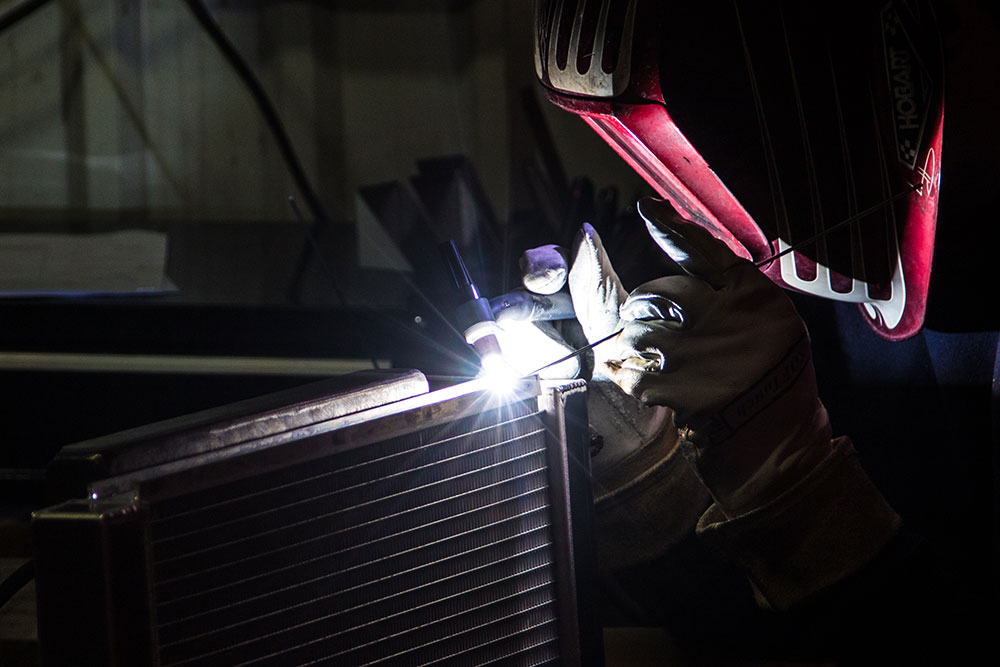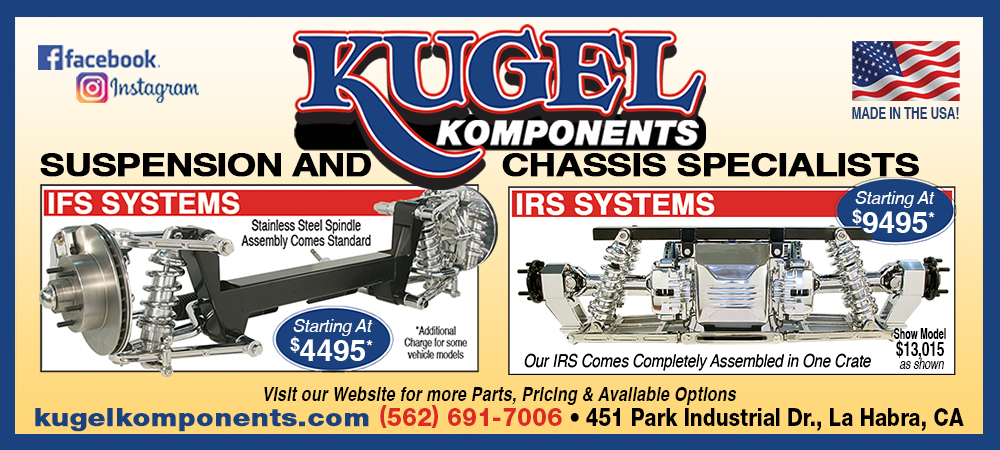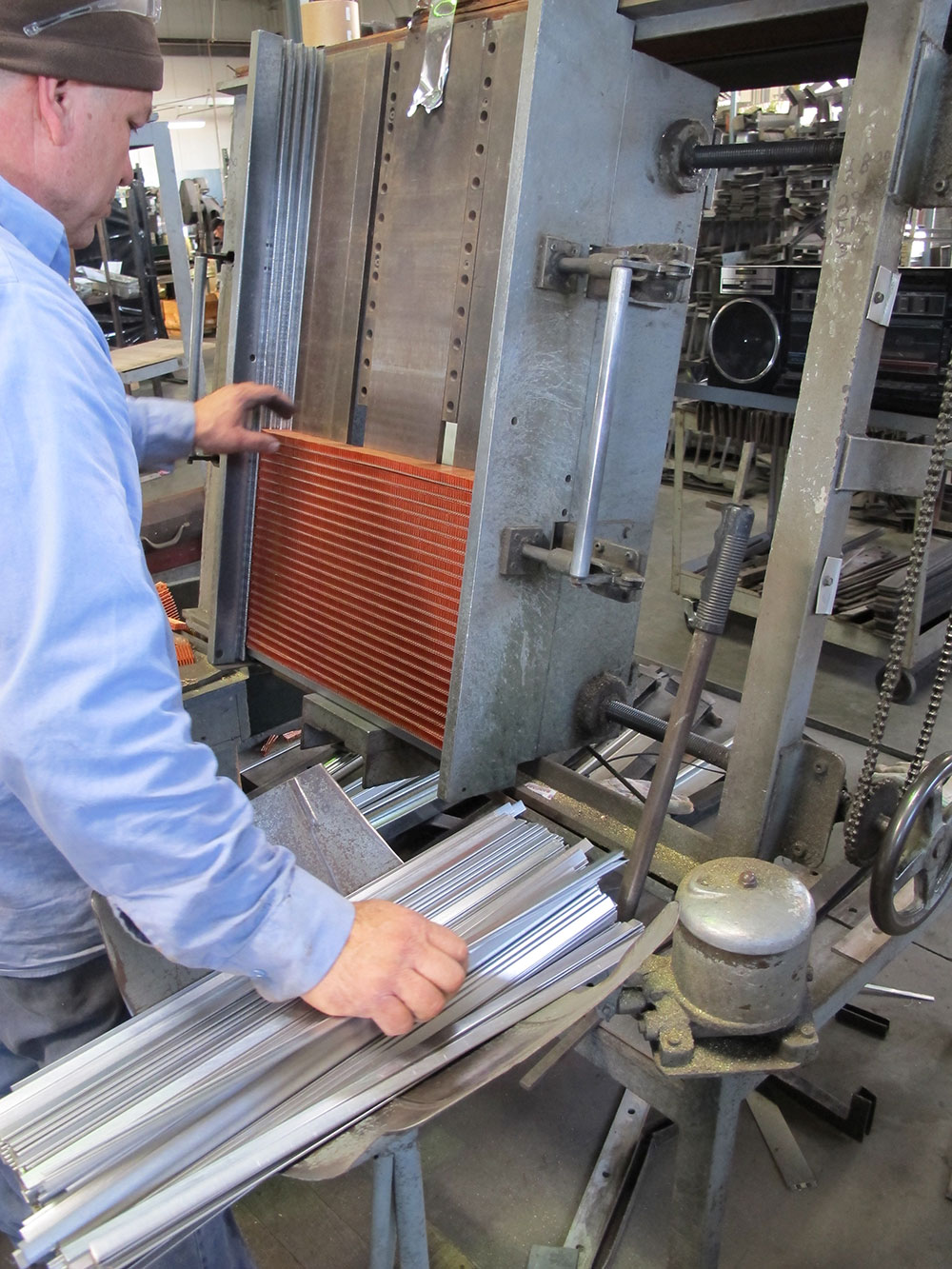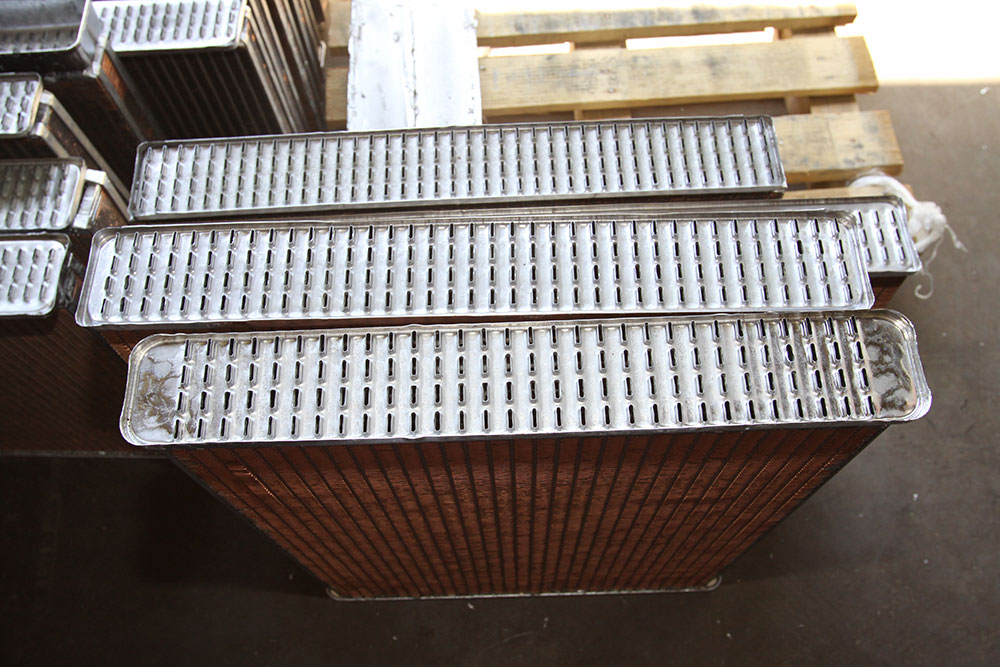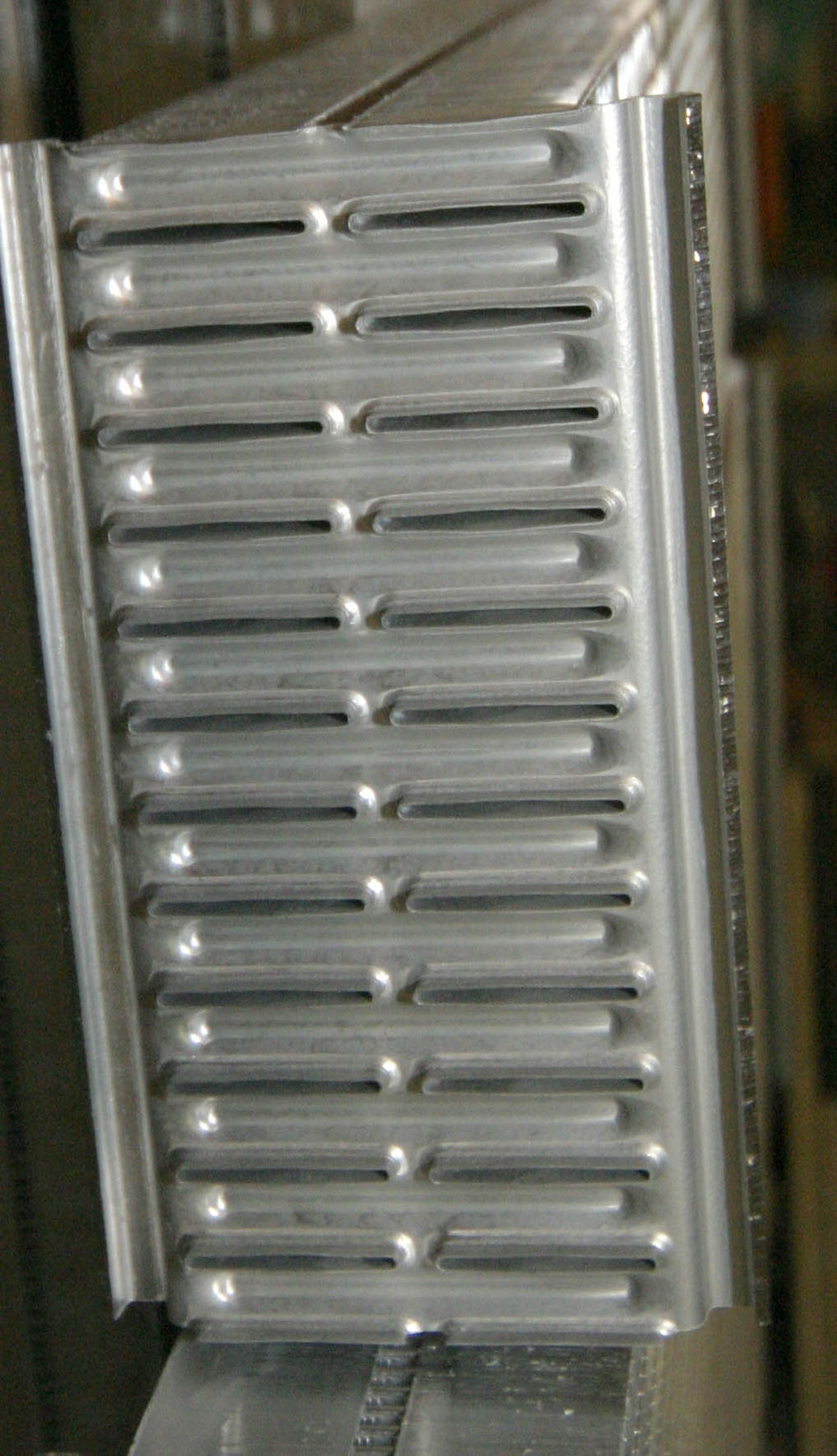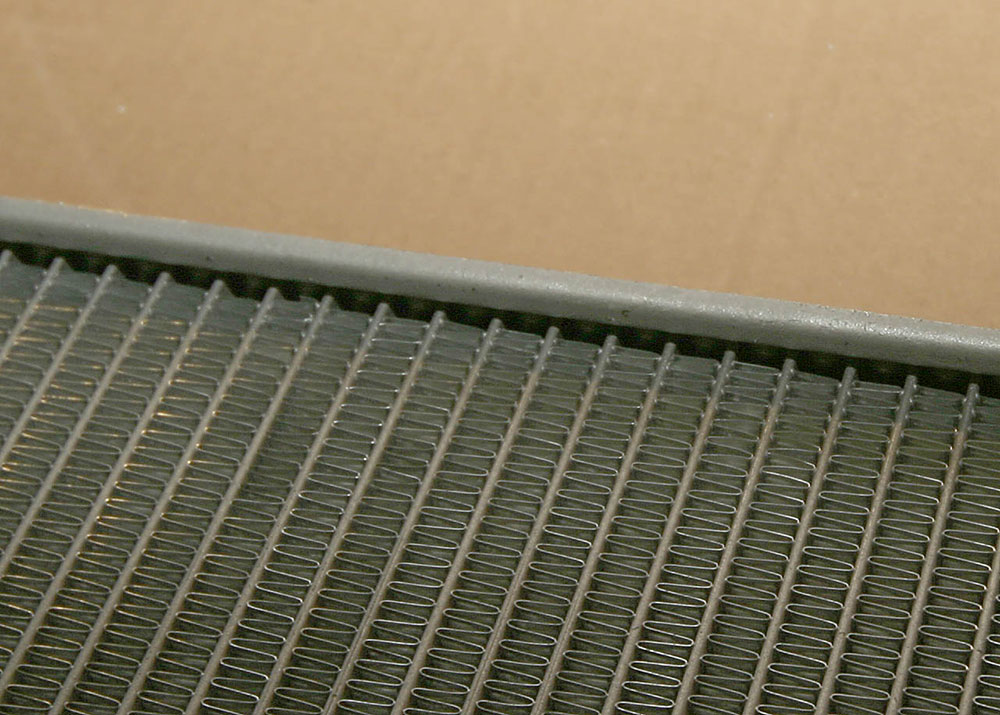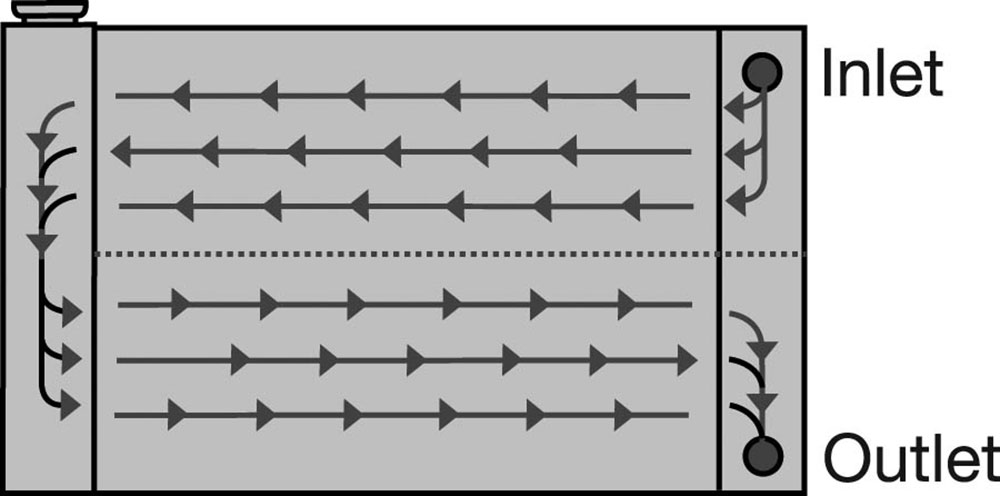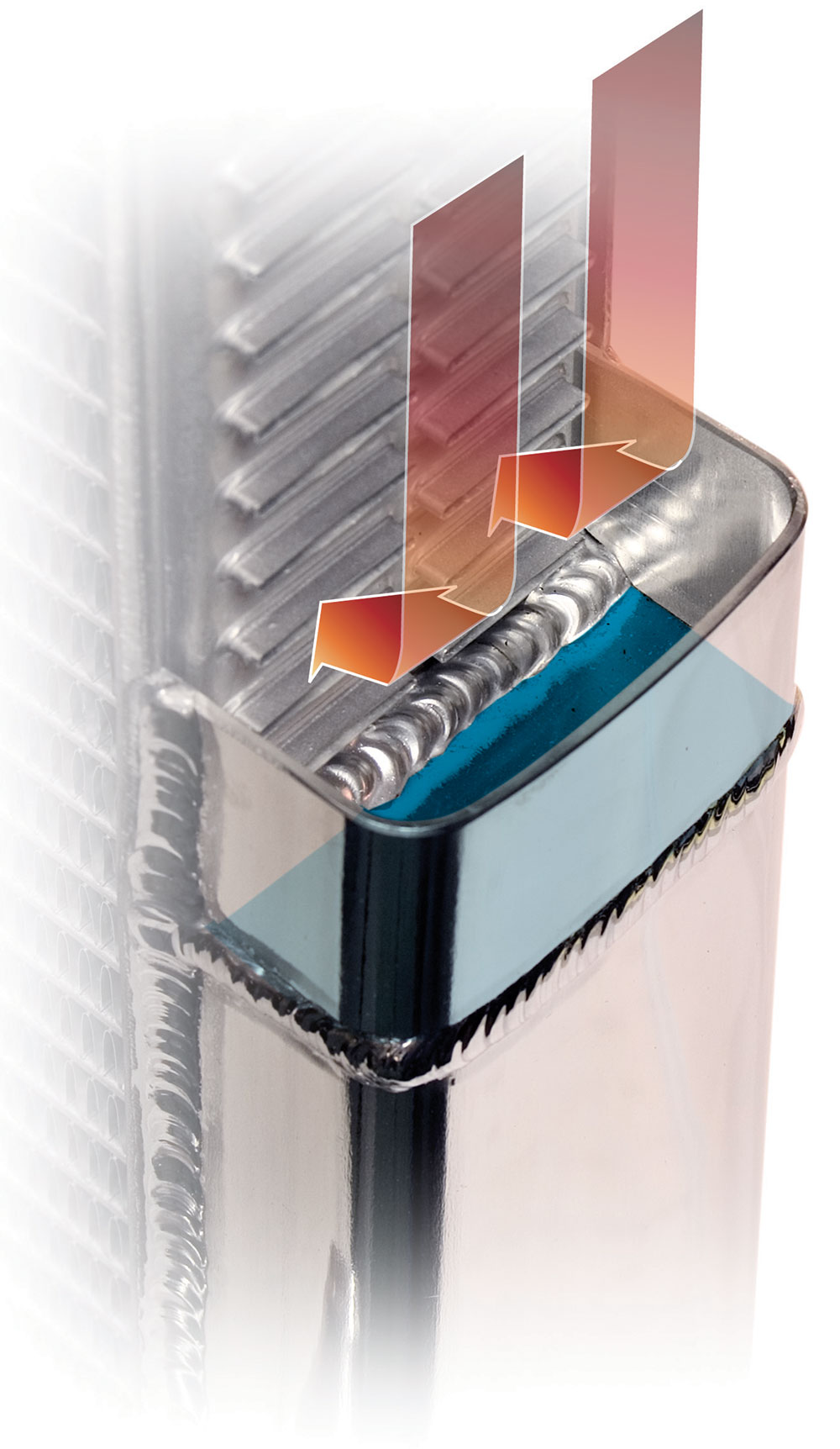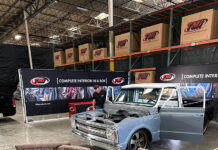Everything You Need To Know About Aluminum Radiators
By Ron Ceridono – Photography by the Author and Courtesy of Afco
There are few things that are more annoying than an engine that overheats. Living in fear of steam boiling out from under the hood of your classic truck and then seeing the green river of death pouring out from underneath your cherished truck is a sure way to ruin the day.
What Engine Temp Is Too High?
Overheating an engine comes with consequences, some minor, like cleaning up the mess that burping out coolant can make, to catastrophic engine damage that can cost a small fortune. And while overheating is a concern, the first question to ask on the subject is how hot is hot? Due to the composition of today’s fuels, 180 degrees is considered the minimum operating temperature for efficient combustion even for vintage engines on the street. Most experts agree that 190 degrees is a safe operating temperature for modern engines and for contemporary fuel-injected crate engines, 195 to 220 degrees is considered the norm.
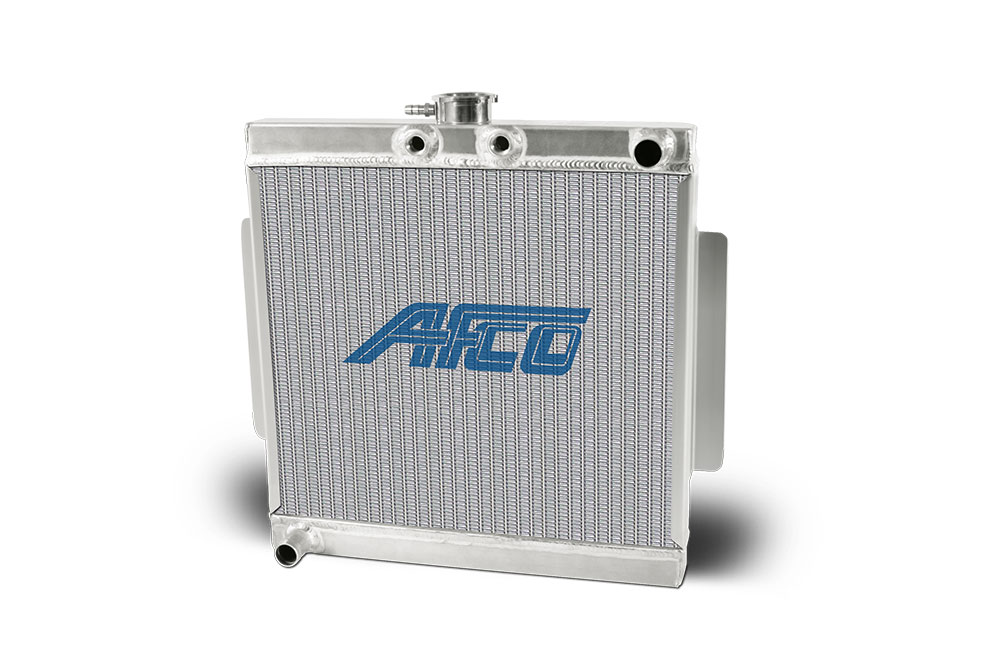
How Important Is A Radiator For A Car?
Any discussion about cooling has to start with the radiator. Simply put, radiators dissipate heat by air passing by the tubes and fins that make up the radiator core. Generally there is a 25- to 50-degree drop in water temperature between the radiator’s inlet and outlet; of course the more powerful the engine is the more challenging cooling becomes.

Does A Radiator Improve Performance?
In performance applications it’s always wise to fit the largest radiator that will fit the space available and consult the tech team at Afco Racing Products, a leading manufacturer of aluminum radiators.

Which Radiator Is Better Copper Or Aluminum?
There has been considerable debate concerning the effectiveness of copper/brass and aluminum radiators, but what it comes down to is this. The copper used to make the fins in a copper/brass radiator is a better conductor of heat than aluminum. However, the lead solder used to attach the copper fins to the tubes is a very poor conductor of heat, and as a result efficiency is reduced. In contrast, Afco brazes tubes and fins together in a controlled atmosphere furnace. This process produces cores with tubes and fins that are aluminum on aluminum with no impediments to heat transfer. The end result is the effectiveness of copper fin core and an Afco aluminum core are virtually the same. Add to that the lighter weight and the eye-catching appearance (particularly when the tanks are polished) and the popularity of aluminum radiators is easy to understand.
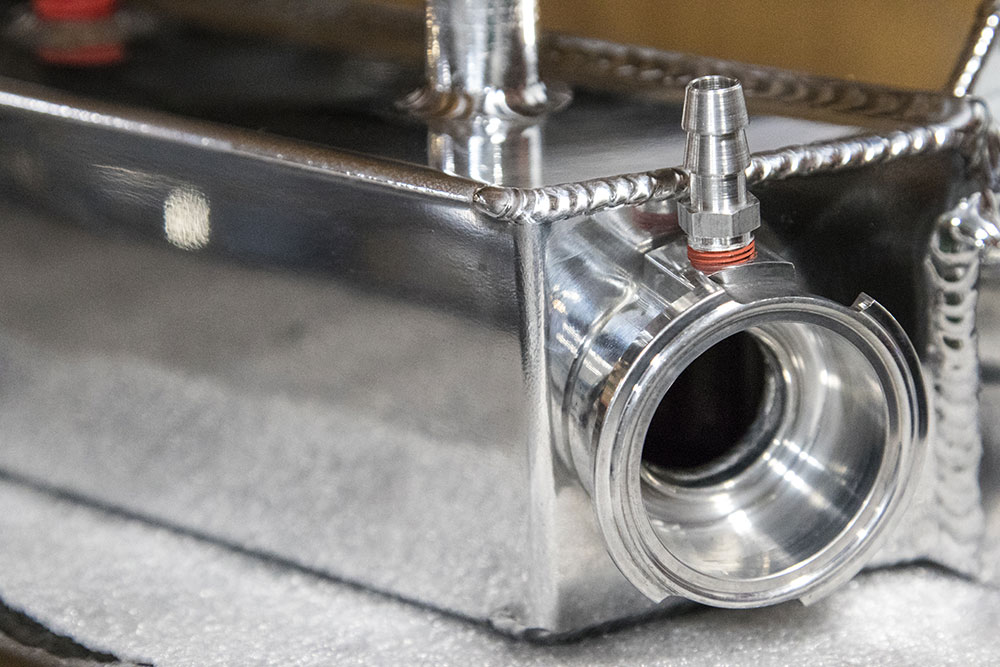
How Many Tubes Does a Radiator Have?
While all radiator cores look similar at a glance, the size of the tubes and the number of fins per inch varies. Modern copper/brass radiators usually have 1/2-inch tubes, while aluminum radiators use 1 or 1 1/4-inch tubes. Copper/brass radiators typically have two, three, or four rows of tubes, while aluminum radiators typically have two.

Are radiator fins important?
The radiator core’s fin count is critical—increasing fin count will increase the capacity to cool, up to a point. If the fin spacing is too close airflow may be restricted, which will reduce cooling capacity. Afco has found the “sweet spot” for the most effective airflow, and as a result the best cooling is 15- or 16-fins per inch.
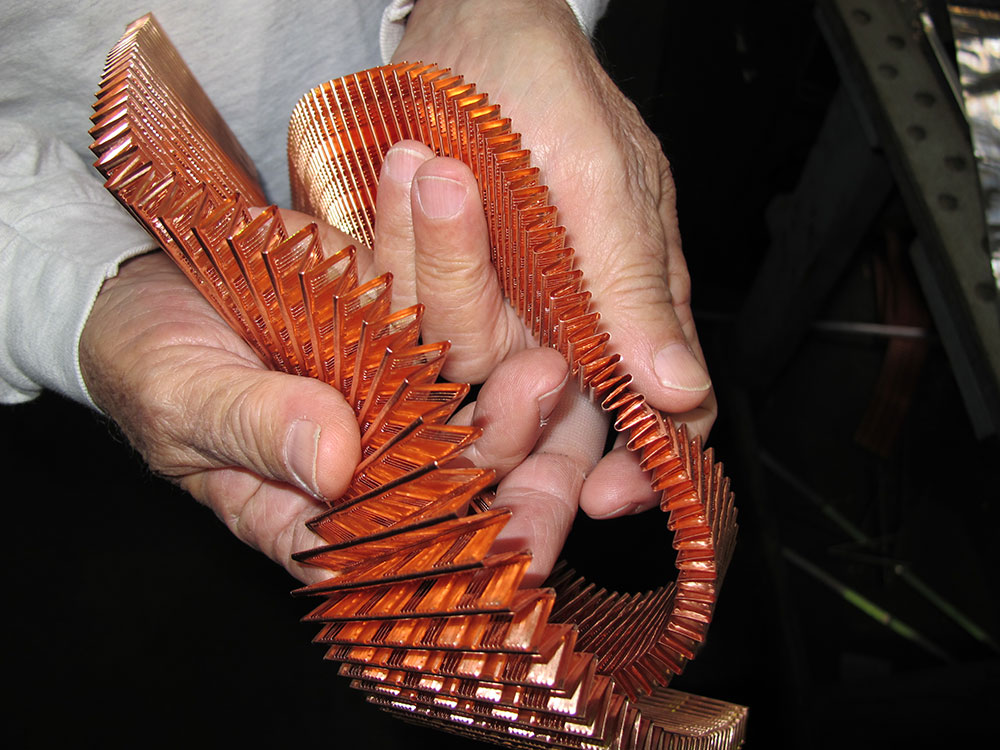
Radiator Core Orientation Changes Over Time
For years radiators were oriented vertically, coolant came in at the top and went out at the bottom.
As hood heights became lower, OEMs went to wider crossflow radiators as a means to get longer tubes in a radiator with less height.
Another variation on core configuration is the multi-pass style. Water flows into the core in one direction, then is redirected by baffles in the tank(s) to flow back through the core a second, or in some cases a third, time.

Thermostat
For street-driven applications a thermostat should always be used. A relatively constant operating temperature is absolutely essential for good fuel economy and performance. A thermostat will ensure the engine reaches operating temperature quickly and helps build water pressure in the block.
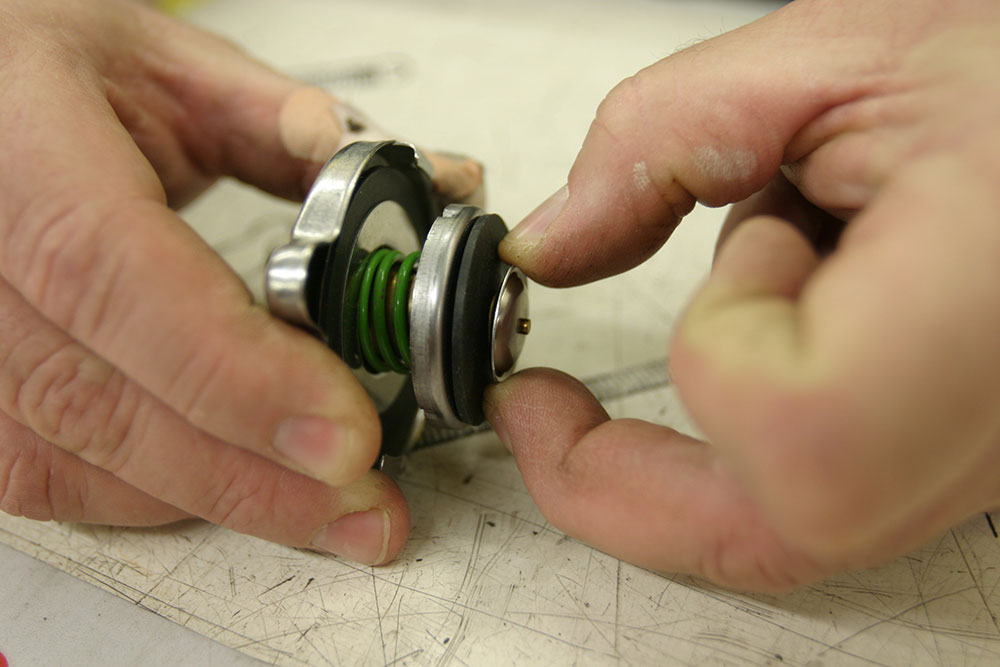
Thermostat Styles
There are two types of thermostats that are common, the poppet valve style and the sleeve style. The poppet style is either open or closed and opens against the flow of coolant from the water pump, which can cause problems at high rpm and high pressure in the cooling system. The sleeve style is a non-linear design that opens gradually. Unlike a poppet design, the sleeve-stye thermostat equalizes the system pressures above and below the thermostat’s moving valve. Therefore the thermostat is pressure balanced and will respond to system temperatures regardless of the pressure in the system.
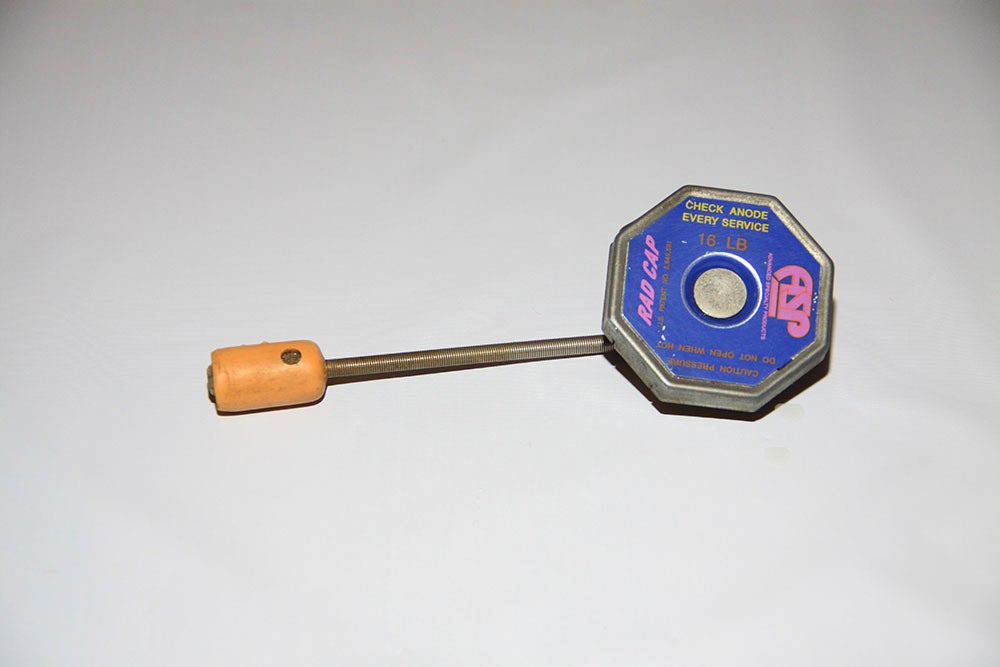
What PSI Should My Radiator Cap Be?
The radiator cap keeps the cooling system under pressure, generally somewhere between 5 and 15 psi for street applications (race cars may use a 30-pound cap or even more). Pressure in the cooling system elevates the boiling point of the coolant approximately 3 degrees for every pound of pressure. Another benefit of a pressurized cooling system is the elimination of steam pockets in the water jackets.
Like many things that seem simple there’s more to a modern radiator cap than meets the eye. Along with a spring that keeps a preset amount of pressure in the cooling system, radiator caps also have a vacuum valve. When an engine is shut off the coolant stops flowing through the radiator, however the coolant continues to absorb heat from the heads and block and as a result the temperature in the system increases. As the coolant expands the pressure often increases to the point where the radiator cap’s rating is exceeded and liquid is released through the radiator’s overflow. When the system cools and the coolant contracts air (or liquid) is drawn back into the radiator through the vacuum valve.
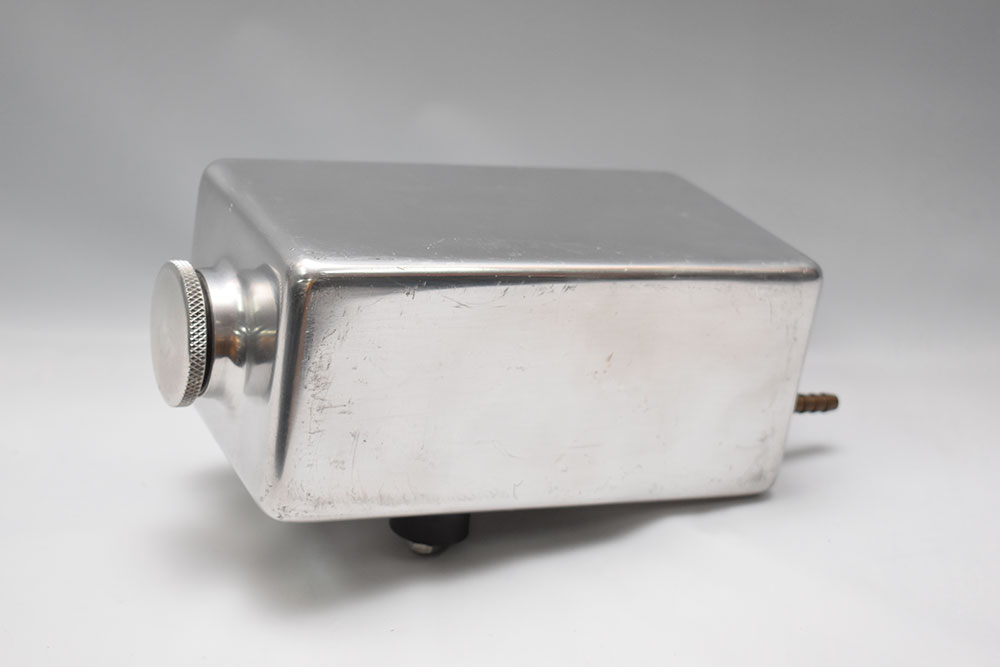
Is A Transmission Cooler Worth It?
Afco does offer radiators with internal transmission coolers. However, they are best suited for restoration applications with stock engines where the cooling system isn’t taxed. For high-performance installations a separate transmission cooler is a better choice.
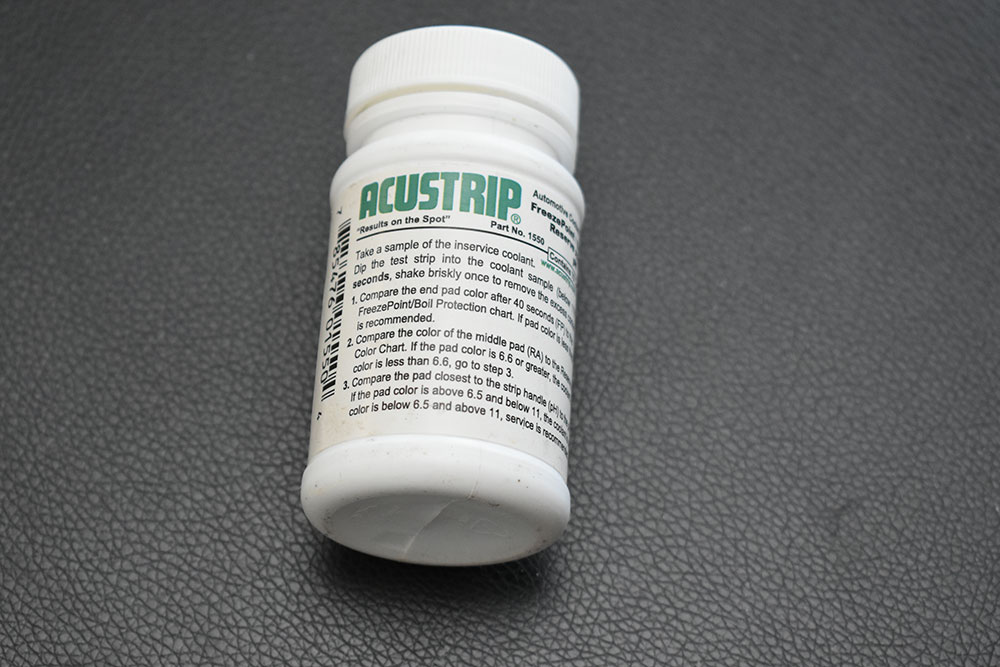
What Is The Mixing Ratio For Coolant?
The suggested coolant for street applications is a 50/50 mixture of water and ethylene glycol antifreeze. It not only protects the system from freezing, it also raises its boiling point (propylene glycol is biodegradable and features low toxicity, making it safer for use around children, pets, and wildlife. Some racetracks and off-road parks require PG formulations).
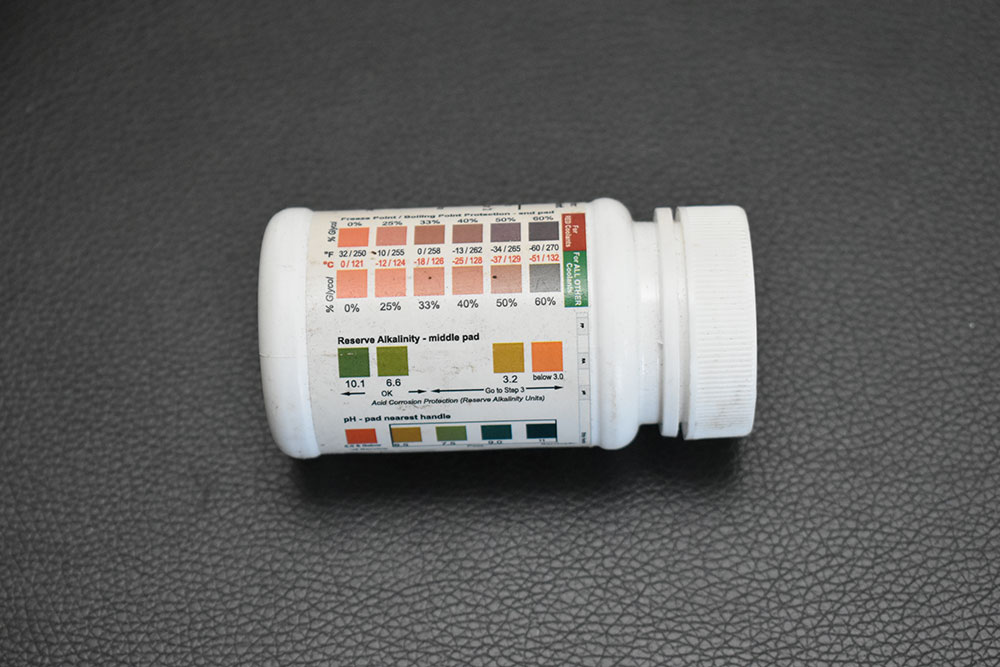
Is Coolant Really Necessary?
In addition, quality coolant contains corrosion inhibitors. Ironically the concern with the coolant used isn’t due to the antifreeze, it’s the water mixed with it. Tap water contains harmful minerals that can lead to corrosion, and there is some debate over using distilled water. The best choice is deionized water and the easiest way to get that is to use Afco High Performance Coolant; it’s pre-mixed with a 50/50 mix of antifreeze and deionized water.
What Does The Coolant Recovery Tank Do?
As we said, pressure in the cooling system often increases after turning off the engine. With a coolant recovery tank any coolant lost returns to the radiator so no air enters the sealed system. This is important as low-coolant level and air in the system can cause overheating.

What Happens If You Don’t Bleed The Cooling System?
Afco warns that radiator damage and inadequate cooling can result from improper filling and purging of the cooling system. Improperly purged systems can result in air pockets that allow coolant to expand, violently creating steam, which causes surges in water pressure that overcome the pressure cap rating. In turn, inadequate cooling (because all internal surfaces are not in contact with coolant) and radiator damage (tube or tank bulging) can result.
Electrolysis
Out of all the evils that can attack a cooling system, particularly an aluminum radiator, electrolysis is at the top of the list.
Bruce Balfour of VE-Labs (888-483-5227/ve-labs.net) identifies the three reasons for electrolysis to occur in a cooling system:
Chemical Electrolysis: This is caused by dissimilar metals in the cooling system, such as cast iron, aluminum, steel, copper, brass, and others that can actually create electrical current.
Stray Voltage: Since the coolant will conduct electricity, stray voltage will travel through it to find a ground. And because an aluminum radiator is the softest metal in the system it is the most vulnerable to damage. To prevent this from happening make sure the engine and frame are properly grounded. Make sure all accessories are properly grounded and remember painted and powder coated surfaces do not make a good ground—metal surfaces must be bare.
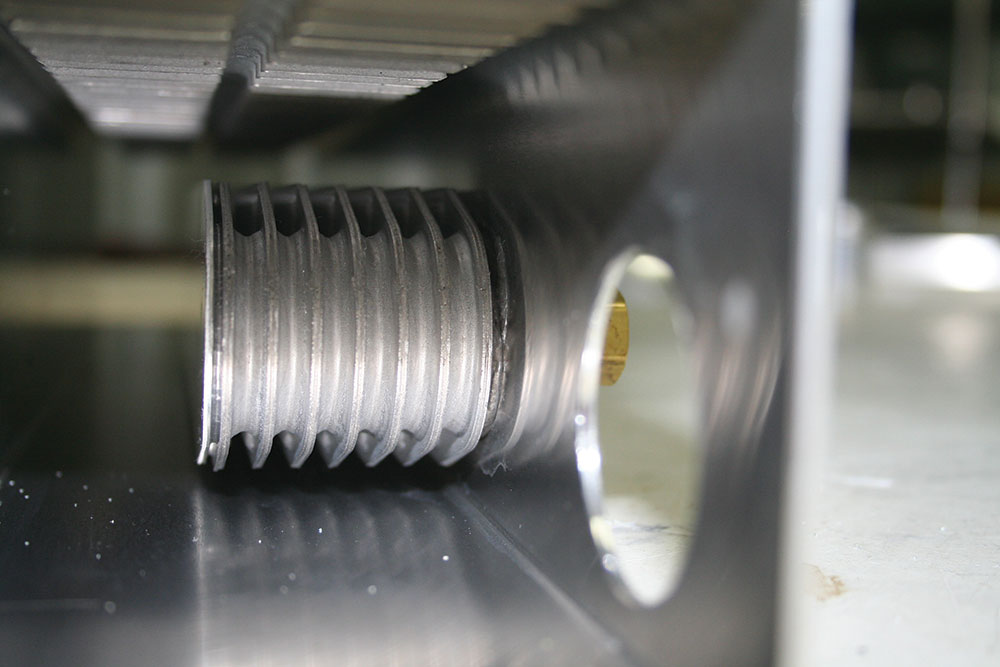
Corrosion Erosion: When the antifreeze turns bad or electrolysis occurs it leeches off very small particles of metals, rust, and aluminum oxide into the coolant. Tests show these particles are like having liquid sandpaper flowing through your cooling system, which in turn erodes the aluminum components even more. The best preventative is to change coolant.
When it comes to keeping your cool, Afco has all the bases covered. They offer replacement aluminum radiators with OEM dimensions and custom radiators for virtually any application in downflow, crossflow, or multi-pass designs. Radiators come in satin finish, black, or, for that extra bit of bling, with polished tanks.
Source
Afco Racing Products
(800) 632-2320
afcoracing.com











